Kartli is one of the main historical and geographical regions of Georgia, the cradle of its statehood. The ancient eastern Georgian kingdom of Kartli, also known as Iberia, was established in the 3rd century BC. The region gave its name to the Georgian ethnic group, hence the spread of Christianity throughout the country.
Day 1. Arrival
Arrival at the Tbilisi International Airport. Transfer to the hotel. Time at leisure.
Overnight in Tbilisi
Day 2. Tbilisi – Mtskheta - Tbilisi
Mtskheta. The oldest city-reserve, whose age is about 4000 years, is considered the Second Jerusalem, a museum of Christian culture. In a small area between small streets, it keeps a lot of saints and places of worship. Mtskheta is actually the heart of Georgian civilization, the capital of Georgia before the founding of Tbilisi.
Jvari monastery – Georgian monastery and temple of the 7th century, one of the masterpieces of architecture for the perfection of architectural forms and the first World Heritage Site in Georgia. Jvari (lit. “cross”) is located on the top of a mountain at the confluence of the Kura and Aragvi near Mtskheta – where, according to historical sources (“Conversion of Georgia”, “Life of the Kartli kings”), St. Nino erected a cross. Jvari Monastery is included in the UNESCO World Heritage List.
Svetitskhoveli – The temple, with some changes that has survived to this day, was built at the beginning of the 11th century. It is one of the greatest cathedrals. The ancient shrine and spiritual center of Georgia was built on the site of previous churches, the walls of which were not completely destroyed and were preserved as architectural elements. Svetitskhoveli keeps the most important Orthodox relics: the chiton of the Lord, the font of King Mirian, a particle of the relics of the Apostle Andrew the First-Called, the robe of the prophet Elia, the relics of the holy Georgian kings. Svetitskhoveli Temple is included in the UNESCO World Heritage List.
Samtavro Monastery. The history of the monastery begins in the 4th century and is associated with St. Nino, one of the most revered saints in Georgia. After arriving in Mtskheta, St. Equal-to-the-Apostles Nino found a secluded place near the northern border of Mtskheta, where she settled in a hut in blackberry bushes (which has survived to this day) and continued her sermon. Samtavro is especially revered by believers, since there are Christian shrines here – The icon of the Iviron Mother of God , the relics of King Mirian and Queen Nana, the relics of St. Shio Mgvimeli and of St. Gabriel Urgebadze. Samtavro Monastery is included in the UNESCO World Heritage List.
Shio-Mgvime Monastery – ancient monastery founded in the 6th century by the monk Shio, who spent his last years in a deep cave located on the territory of the monastery. Where did the name of the monastery come from – “Shio-Mgvime”, which in Georgian means “Cave of Shio”. The first building was the Church of St. John the Baptist. The monastery quickly became the largest monastic community; by the end of the 6th century, it had about 2,000 monks in its ranks. The monastery was repeatedly devastated and destroyed. At the end of the 19th century, Shio-Mgvime was completely renovated. Now it is active and still attracts pilgrims.
“Chateau Mukhrani“. “Mukhrani” in Georgian means “decorated with oak trees”. This is not only one of the most picturesque places in Eastern Georgia, but also a territory with healthy soil and harmonious climate. Masters of Chateau take the authenticity of the region as a basis and strive to emphasize the terroir and character of the unique Georgian grape varieties. Chateau vineyards are located in specially selected areas of the region. The fabulous palace and wine cellars, beautiful gardens and vineyards brought Chateau Mukhrani worldwide fame.
Overnight in Tbilisi
Day 3. Tbilisi – Grakliani - Kintsvisi -Gori
Mount Grakliani. A unique building of the 5th century BC, which was erected on Mount Grakliani in honor of the gods of fire and fertility, the first completely preserved monument of this period. In the central part of the building there is a large altar, in the back room there is a furnace, in which there are vases used by the priests to carry the fire. There is also a device with which the seeds of medicinal plants were ground. On the plinth of the altars of a pagan temple, an archaeological expedition discovered an unknown Georgian script.
Kintsvisi Monastery. The current male monastery is located in the picturesque gorge of the Dzama River. On the one hand, the monastery is naturally protected by a gorge, on the other, there is a complex – three churches, a bell tower and a piece of a preserved wall that adjoins it. The territory of the monastery is spread out on a hill in a mountainous region surrounded by forest. It is believed that the temple was erected during the reign of Queen Tamara, during the “golden era” of the Georgian state.
Cave city of Uplistsikhe. Even from afar, this quaint rock city fascinates with its unusual view. Cave grottoes gape like giant pores on the rocks, inside of which life once boiled. There were once huge majestic halls, temples, dwellings, interconnected by winding corridors. It is hard to believe that this grandiose titanic work to create a whole city from the stone firmament is the creation of human hands. Once on the territory of Uplistsikhe there were about 700 caves and similar structures, and today there are about 150 of them.
Gori. The Gori fortress in the hilltop. The territory of Gori has been populated since the early Bronze Age. According to the medieval Georgian chronicles, the town of Gori was founded by King David IV (r. 1089-1125) who settled refugees from Armenia there. However, the fortress of Gori (Goris-Tsikhe) appears to have been in use already in the 7th century, and archaeological evidence indicates the existence of an urban community in Classical Antiquity.
House-museum of Joseph Stalin. The exposition contains many things that actually or supposedly belong to Stalin, including some of the furniture from his offices, and gifts. The display of the exposition ends with one of the twelve copies of Stalin’s death mask. In front of the main museum is the house where Stalin was born and spent the first four years of his life. The museum presents Stalin’s personal railway car. The car has been used by him since 1941, including for trips to the Tehran and Yalta conferences.
Overnight in Gori
Day 4.
Sioni of Ateni – one of the most beautiful monuments of Georgian architecture is located In the village. The temple was built at the beginning of the 7th century and is a cross-domed temple, famous for its frescoes. Outwardly, it is an architectural copy of another famous monument – the Jvari Monastery in Mtskheta. Outside, the temple is decorated with stone ornaments. Some of them were made during the construction of the temple, the rest during the reconstruction in the second half of the 10th century.
Fortress of Ateni, towering directly above the road on an almost sheer cliff. Despite its small size, the fortress was considered a reliable shelter already in the 10th century. Several building layers are distinguished in the ruins. The original walls were thick and high. At the eastern end, a two-part reservoir was built, which was supplied with water from a water pipe. The Ateni fortress is located in the Ateni valley and was strategically significant. Here was the shortest road from Shida Kartli towards the southern regions of Georgia.
Temple of Ertatsminda. An important monument of the “golden age” of Georgian architecture Not much is known about the history of Ertatsminda. In troubled times, this territory was not only a religious building, but also a rather powerfully fortified citadel. The fortress wall of Ertatsminda was so high that only the dome of the temple was visible behind it. In the western part of the church rests the eldest son of the Saakadze family – Paata, who was in Iran as a hostage and was killed in 1625 by Shah Abas.
Rkoni Monastery dates back to around the 7th century. Due to its location in the gorge, the monastery served as a refuge for the locals. During the raids, people left their homes and went to the monastery. In the XII-XIII centuries. A significant trade and military-strategic route ran along Rkoni, which connected Shida Kartli with Javakheti and Trialeti, and then, through Armenia, with the Middle East. This factor contributed to the construction of monasteries in Rkoni and its environs.
Arch bridge of Tamara in Rkoni. This arched bridge is the best example of the bridges of medieval Georgia. In the Middle Ages, a major trade and military route of Georgia ran here. Apparently, it was on this bridge that the trade route passed. The bridge of Tamara dates back to the XII-XIII centuries. The bridge is 12.5 meters long and 2.2 meters wide. You can walk on it, the bridge is in excellent condition. It is built of broken stone and thick lime mortar.
Overnight in Tbilisi
Day 5. Tbilisi – Bolnisi - Dmanisi - Tbilisi
The region of Kvemo Kartli was formerly known as Trialeti. This region of Georgia is inextricably linked not only with the history of the country since ancient times, but also with the history of all mankind. It was here that during the excavations the five oldest hominid skeletons in Europe were discovered, attributed to the species Homo Georgicus, about 1,800,000 years old, it was here that the remains of clay vessels with seeds of cultivated grapes dating back to the 6th millennium BC were found, which allowed scientists to talk about Georgia as the birthplace of winemaking.
Tsurtavi Fortress. Tsurtavi is one of the last fortresses of this type, which was built in the kingdom of Kartli-Kakheti. The area of the fortress is 2 thousand square meters. The height of the walls is 6 meters. There are towers at the corners of the fortress. Another tower stands in the center of the eastern and western walls. The first of them is the main entrance to the fortress. On the facade you can see a bas-relief depicting chained lions. All towers are equipped with loopholes, embrasures for stones and cannon vents. To date, on the territory of the fortress, there is a functioning convent named after the Holy Great Martyr Queen Ketevan.
Church of Saints Peter and Paul and the monastery complex. The church was built on the top of Mount Elia, at an altitude of 820 meters above sea level, from where the most beautiful places of the area open up. This place is rich in history. Since ancient times, there was a small church in the name of the apostles Peter and Paul. Stone terraces on the mountain, where vineyards have been planted and vines of various varieties have been grafted, are simply mesmerizing and every tourist will want to see this with their own eyes. These terraced vineyards have no analogues in the country. The monastery has its own cellar, because monastery winemaking occupies a special place in the history of Georgia.
Sioni of Bolnisi. A similar type of temples in Georgia began to be erected by the end of the 5th century. Bolnisi Sioni is the very first basilica built in Georgia and still preserved. Surprisingly, today the temple has reached almost unchanged. The construction of Sioni coincides with the reign of the legendary king Vakhtang Gorgasali. The significance of the temple and its influence on the culture of Georgia is great. Firstly, the Bolnian basilica is the oldest in the country. And, secondly, there are inscriptions on the facade of the temple, which are the first examples of Georgian Asomtavruli writing. On the eastern façade of the basilica there is a cross – later called the Bolnisi Cross – which is depicted on the modern flag of Georgia.
Bolnisi – city with different names: Katarinenfeld, Luxembourg and currently – Bolnisi. In past centuries, there were German villages in the Kvemo Kartli region. The German history of Bolnisi began in 1818 when the Germans were evacuated from Swabia. The German settlement was originally called Katarinenfeld. At that time, the city had a clear linear layout, and the main street was called Tifliser Strasse. In the center was a crossroads, from which a Lutheran church stood to the south. The houses have an unusual shape, which is not typical for the architecture of Georgia.
Medieval fortress of Kveshi – built between the 7th – 9th centuries, on a low accessible rock. The fortress of Kveshi represented the royal and princely residence. Until the end of the 18th century, it served as one of the main outposts to deter enemy forces penetrating this region from the south. An important trade route has passed through here for centuries. The fortress is special in that it was a kind of meeting point between Western and Eastern cultures. The surrounding area offers a beautiful view.
Hillfort of Dmanisi – the most important cultural monument in the Kvemo Kartli region. People settled here as early as the early Bronze Age – around 3000 BC. During archaeological excavations, the remains of an ancient man were found. The analysis proved that fragments of the jaw and skull belong to Homo erectus, and their age reaches 1.8 million years. Further, many more fragments were discovered and scientists managed to reconstruct the appearance of the so-called Dmanisi Homo georgicus.
Sioni of Dmanisi – located on the territory of the ancient city – one of the 5 Zion temples in Georgia (VI-VII centuries), in which fragments of ancient paintings have been preserved. In the upper part of the Settlement there is an ancient fortress. These are the ruins of a once grandiose structure. The ruins of three towers have also been preserved, all of them facing south. The most important defense of the fortress is its location. It rises on a high hill, and there are gorges on both sides, which made it almost impregnable and protected the city from invaders.
Overnight in Tbilisi
Day 6. Tbilisi – Kojori – Asureti - Tbilisi
Fortress of Kojris-Tsikhe (original name – Fortress Agarani) is located on Mount Azeula (Trialeti Ridge). The exact date of construction of the fortress is unknown. According to archaeologists, it was built at the end of the eighth – at the beginning of the ninth century. The fortress was built on top of a high mountain of volcanic origin, because of this it was difficult for the enemy to reach it. This fortress was of great strategic importance for feudal Georgia. She controlled the caravan route from Shida Kartli to Trialeti.
Kabeni temple was one of the outstanding works of Georgian architecture of the first half of the 13th century. Outside the fence of the monastery, to the north-east of its walls, a small hall church has been preserved. It is built of torn stone and lined with well-hewn slabs of yellowish stone. On the southern façade, an inscription has been preserved, executed in the capital Georgian letter asomtavruli. The inscription indicates that the church was built in the period of Queen Tamara.
Sculptural complex in memory of the Georgian cadets who died in battles. In February 1921, units of the Red Army entered Georgia. On the outskirts of Tbilisi, in Kojori, they encountered the resistance of the junkers. On the Kojori-Tabakhmela front, under the command of Colonel of the Georgian National Army Alexander Chkheidze, 120 cadets and volunteers fought against the Red Army – a total of 350 fighters. Most of the junkers died the death of heroes on the battlefield.
Asureti (Elizabettatal) is the only settlement in Georgia where houses with half-timbered architecture have been preserved in such a quantity. On the central street of the village there is a church – another bright trace of the presence of the Germans in Asureti, built in 1871. Sulfur baths are found on the outskirts of the village. To this day, massage stone couches have been preserved. At the very exit from the village there is an old cemetery, on the territory of which you can see a number of German graves. Another interesting building in the vicinity of Asureti is the remains of a winery built by the Germans in 1931.
Overnigt in Tbilisi
Day 7. Tbilisi
Sameba Cathedral – the Temple was really built on a grandiose scale, its sparkling golden dome can be seen from almost anywhere in Tbilisi. The temple is part of a whole complex, which also includes the residence of the Patriarch and the monastery, theological seminary and academy, a hotel; as well as a complex of nine chapels, five of which are located underground.
Metekhi Temple. On the elevated rocky bank of the Kura River stands a majestic witness to the long and exciting history of Tbilisi – the Metekhi temple. Once upon a time there was a palace of local kings, which, according to historians, was erected by the founder of the city, Vakhtang Gorgasali. There is a beautiful observation platform from which you can admire the Old Town lying opposite across the Kura.
Narikala fortress, which is the most ancient monument, a kind of “soul and heart of the city”. The date of construction of the fortress is called approximately the 4th century AD, that is, it stands, in fact, from the foundation of the city itself. In the future, the fortress was expanded and completed several times.
Tbilisi sulfur baths, built in the style of classical oriental architecture. These are low, squat buildings, topped with semicircular domes with large glass openings in the center, which served as windows that illuminate the interior, since the baths themselves are below ground level.
Legvtakhevi is located in the center of old Tbilisi, behind the sulfur baths. This part of old Tbilisi is distinguished by individual landscape architecture, at the same time it is characterized by a significant architectural, historical and cultural heritage. There is also the central entrance to the Tbilisi Botanical Garden. From the high observation deck, located at the entrance to the garden, you can see the Legvtakhevi gorge, into which a 20-meter waterfall falls from a ledge of a rock.
Sioni Cathedral – historically the main temple of Tbilisi, named after Mount Zion and consecrated in honor of the Assumption of the Blessed Virgin Mary. It is located on the banks of the Kura River in Old Tbilisi. Some hierarchs of the Georgian Church are buried in the cathedral, and its main relic is the ancient cross of St. Nino, who brought Christianity to Georgia.
Tbilisi Sea and the majestic Monument “History of Georgia“, which is simply amazing. On one of the city hills, which offers a beautiful view of the Tbilisi Sea, a unique composition of twelve sculptures of Georgian kings, a church and stairs with arches, balustrades and viewing platforms has been created.
Mount of Mtatsminda. One of the mountains around Tbilisi, called the “Holy Mountain” by analogy with the Holy Mountain of Athos. The funicular is a railway, a 500-meter road allows you to get out in the middle of the mountain, where you can visit the Pantheon of writers and public figures of Georgia, as well as climb to the Mtatsminda Amusement Park itself and enjoy the majestic panoramic views of the city.
Rustaveli Avenue. In order to learn more about Tbilisi and be able to touch its traditions, you need to take a walk along Shota Rustaveli Avenue. The avenue is a combination of old and modern buildings, art galleries, exhibition halls, theatres, malls, cafes, restaurants and gift shops. Shady plane trees, monuments to prominent Georgians, front facades with stucco, bronze men, streets running up – all this is the central Rustaveli Avenue.
Overnight in Tbilisi
Day 8. Departure
Walk around the city
Transfer to the airport.
The price for one person $ ( US Dollars)
From 50 USD
The price depends on the number of people and varies(±) from 50 USD for one day.
Price Includes: Transport, Accommodation, Services of guide.
The cost of each excursion is discussed individually.
For more information, do not hesitate to call or write Viber / WhatsApp +995 599 25 65 19 or in mail : info@georgiavoyage.ge
*Timetables : on request
| Nomber of persons | 1-3 per | 4-8 per | 9-19 per | 20-40 per |
| Mode of transport | Sedan | Minivan | Minibus | Bus |
*The tour programs are based on our experience and the opinions of our completely different customers. These are semi-finished circuits, whose programs can be easily redone. Add or subtract the number of excursion days. Sort or redo the excursion day, change the sequence, the duration, prices …
Every day excursion is a stand-alone destination. It is the separate route with the calculation of the distance and the comfortable movement between the excursion points. Each tour and each itinerary is examined at the time of the request. Also, at the desire of the tourists, they can change the already booked and paid program.






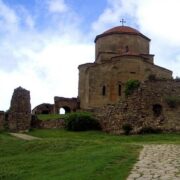


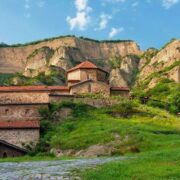
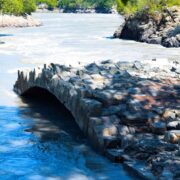



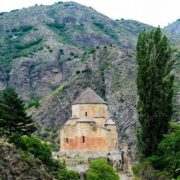
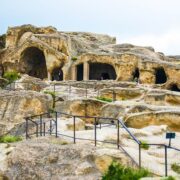




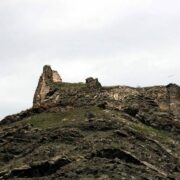



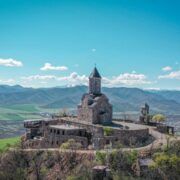

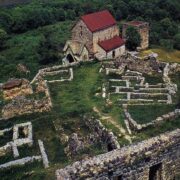


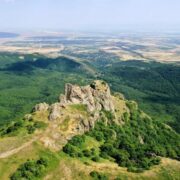

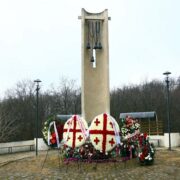



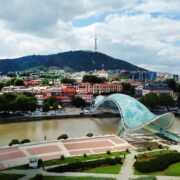

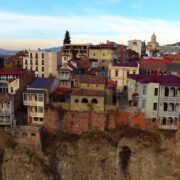


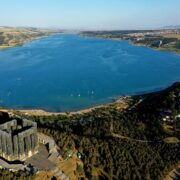


Tour Reviews
There are no reviews yet
Leave a Review